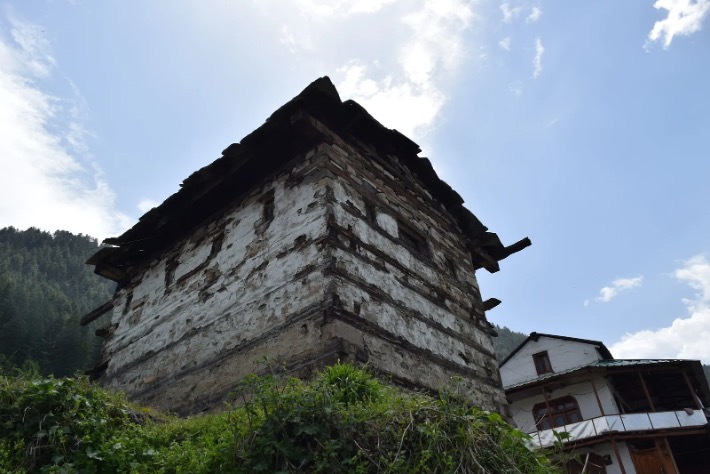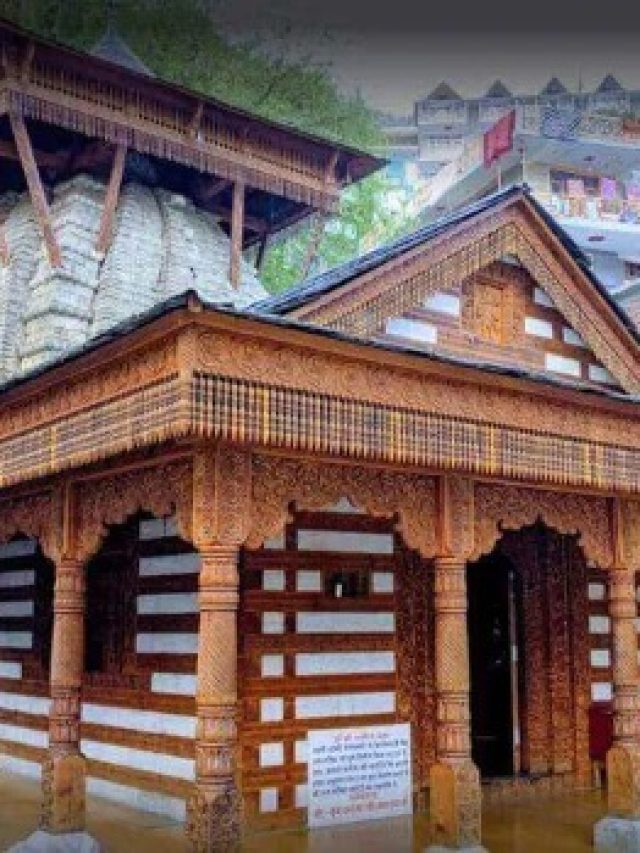The culture and traditions of Himachal are as old as civilisation in the Himalayas themselves. The locals knew and understood the region well and developed their habitats in sync with the local resources. This synchronisation between man and nature has been in place for centuries. Himachal’s rich cultural heritage is a gift of this sensitisation towards nature. Sustainable architecture, the Kathkuni style, was developed in the region to put to use abundantly available raw materials that could withstand the natural elements.
Kathkuni Architecture puts to use wood and stone as the prime materials for construction. The name itself is derived from the words Kath and Kuni which mean wood and corner respectively, indicating that it is a style of construction that rests on wooden corners.
Weather Friendly
Since structures have been made in the Himachal region, Kathkuni has been the go-to method of construction. The biggest advantage of this style of architecture is that it is attuned to the local environment. It can keep out the bitter winter cold due to the insulation provided by the material used and the style of building. These buildings are double walled with small, loose stones between two parallel wooden beams. Even in the coldest weather, the air gaps keep the structure warm.
Sustainable and environment friendly
It is extremely environment friendly, despite concerns about wood usage. The concrete that is used in modern construction is on of the most environmentally hazardous materials and like plastic, does not disintegrate to become one with nature.
Seismic activity friendly
Another reason that favours the use of Kathkuni architecture is that the region is prone to earthquakes and this style can withstand them due to its high tensile strength. As opposed to the conventional vertical column style of construction, Kathkuni style uses horizontal beams that are criss-crossed and put together with wooden bracings. Stone corners are put in to protect the wooden beams, and wooden pegs known as Kadil support the solid wood planks. The weight of tightly packed stones keeps the structure strong while the wood provides the structure its much needed flexibility to withstand earthquakes. This is mostly topped with slate tiles on the roof which further weigh the structure down and stabilise it. The gap between the double walled structure also helps prevent cracks and caving in of the walls in case of an earthquake. Kullu, Manali, Chamba Shimla and other middle Himalayan regions have many Kathkuni style houses and buildings.
Aesthetically Pleasing
Despite being practical, aesthetics are not put aside in KathKuni. These structures have beautiful projecting balconies with intricately carved wooden crests. Carving is also done on the columns and beams. This gives the contrast of wood and stone a charming feel.
Standing Majestic at Naggar
Naggar was once the capital of the Kullu kings. Under their aegis, stone temples and exquisite houses were constructed in this wonderful architectural style. Many of these are still standing, by most accounts, since as many as 500 years. The Naggar Castle is an exquisite example. It was built by Raja Sidh Singh of Kullu in 1460. It has now been converted into Hotel. The intricate carvings in the interiors are a testament to the bygone days. The Jagatpatt Temple inside the castle complex is a beautiful structure built in the KathKuni style with intricate carvings on the wood.

Divine Marvel of Hadimba and Vashishth Temple
Surrounded by a lush green forest of Deodar trees, the ancient pagoda style Hadimba temple was built in 1553. It is dedicated to Hadimba Devi and is built in the traditional KathKuni style. The single storied temple is built atop a small cave and is adorned by delicate carvings on wood. The temple is also known as the Dungri Temple. Traces of the old wood work can be observed in the projecting balconies, and frames of doors and windows.

Located in its namesake village, the Vashishth Temple is a renowned place of worship revered for its hot water springs that are said to cure ailments. Its dry masonry, sans the use of slurry, indicates the KathKuni style of architecture.
History of KathKuni
KathKuni is a tradition that has been handed down from generation to generation, practiced over centuries. After the British came to India, they started felling forest after forest to source deodar wood for making railway sleepers, among other things. Once they exhausted the supply in one forest, they would move further on, higher. This was exacerbated by the two world wars. Himachal’s mixed forests were replaced with fast growing pine varieties.
With every year and decade that passed without much construction using the traditional technique, artists and artisans were lost to other trades and so was the technique. There was a limit on how much wood each person could use and this wasn’t enough to build KathKuni structures. With the introduction of concrete houses, traditional methods of building came to a complete halt.

NORTH- Reviving Architectural Traditions
NORTH is an organisation that promotes local craftsmanship and is working towards the preservation of ancient building traditions of the region. The brainchild of Rahul Bhushan, a 29 year old Himachal local, the organisation uses the expertise of a local artisan with in-depth understanding of KathKuni construction. It is noteworthy that the organisation encourages clients to build new structures by re-using and re-purposing the stones from abandoned KathKuni houses. Given the global interest in use of sustainable and eco-friendly materials for construction, many of their clients are hotels and homestays. Although this traditional style of architecture remains as relevant as it was in the olden days, people are discouraged from trying it due to restrictions on availability of material, the expense involved and a lack of experienced artisans. NORTH assists people in cost and time cutting by replacing wood with other eco-friendly and cheap material like bamboo and hempcrete, and sustainable stones made of hemp. Efforts like these can go a long way in maintaining the traditions and keeping Himachal’s natural bounty intact.
RHH – Restoring Building Traditions
Resilient Himalayan Homes (RHH) was started by Sanjay Chikermane at IIT Roorkee and is funded by the national Mission on Himalayan studies. It was initiated with the aim of restoring and revitalising old building styles of Himachal. It is involved in experimenting with different materials that could effectively replace the wood corners to lock the beams in place. They’re trying to achieve the same level of flexibility and behaviour as the traditional materials while looking for alternatives. This will help retain the character of traditional architecture while using mainstream materials.
Current status
The village of Chichogi on a mountaintop in Kullu, is one of the last that practices KathKuni architecture. The need of the hour is to evolve with the changing times. In place of wood and stone, more easily available and cheaper alternatives need to be explored. Any craft that stays relevant to current times evolves with changing demands. If KathKuni had been around all this while, the craftsmen would have surely come up with alternatives that were better suited to the present.

Contributor







